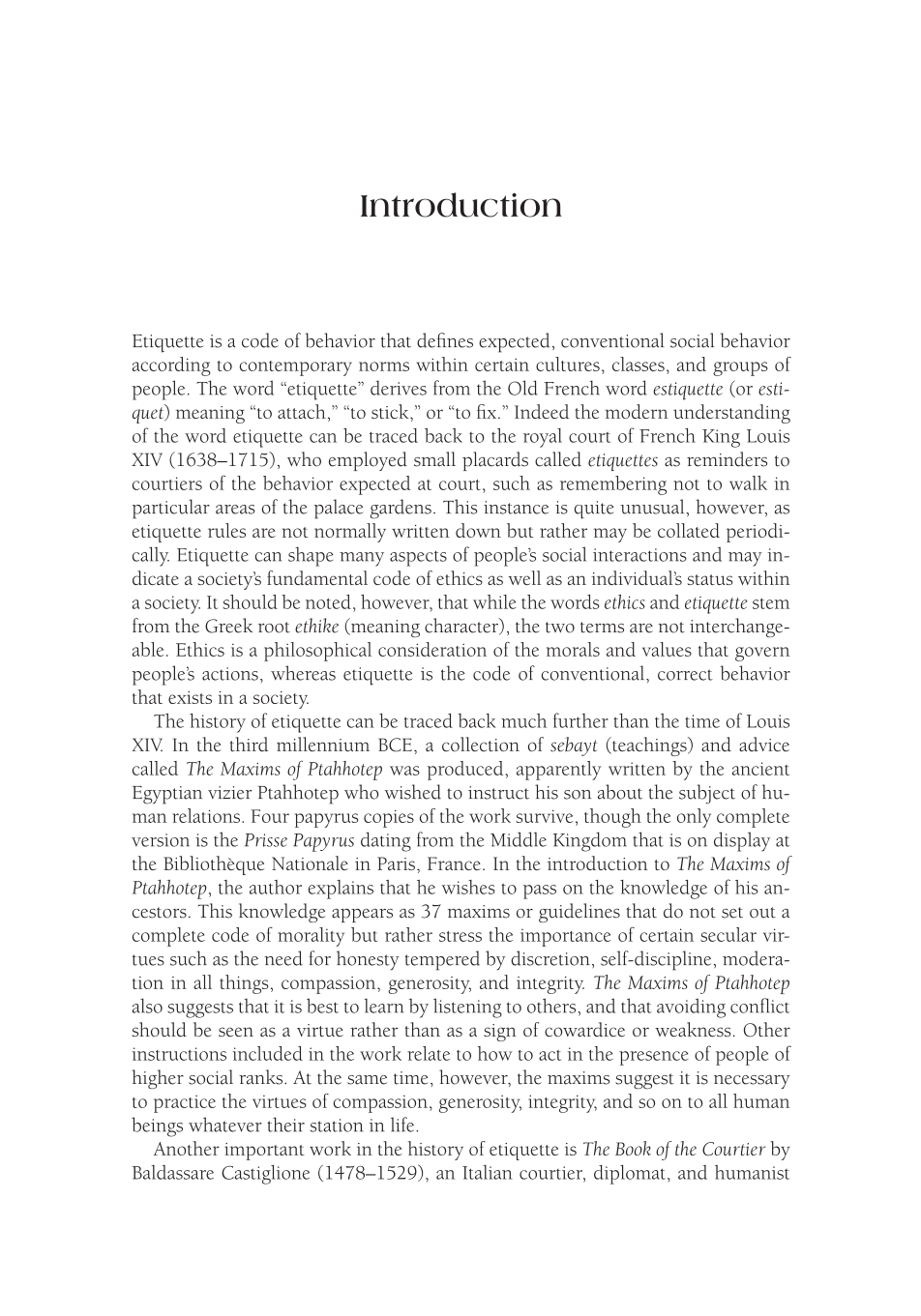Introduction
Etiquette is a code of behavior that defines expected, conventional social behavior
according to contemporary norms within certain cultures, classes, and groups of
people. The word “etiquette” derives from the Old French word estiquette (or esti-
quet) meaning “to attach,” “to stick,” or “to fix.” Indeed the modern understanding
of the word etiquette can be traced back to the royal court of French King Louis
XIV (1638–1715), who employed small placards called etiquettes as reminders to
courtiers of the behavior expected at court, such as remembering not to walk in
particular areas of the palace gardens. This instance is quite unusual, however, as
etiquette rules are not normally written down but rather may be collated periodi-
cally. Etiquette can shape many aspects of people’s social interactions and may in-
dicate a society’s fundamental code of ethics as well as an individual’s status within
a society. It should be noted, however, that while the words ethics and etiquette stem
from the Greek root ethike (meaning character), the two terms are not interchange-
able. Ethics is a philosophical consideration of the morals and values that govern
people’s actions, whereas etiquette is the code of conventional, correct behavior
that exists in a society.
The history of etiquette can be traced back much further than the time of Louis
XIV. In the third millennium BCE, a collection of sebayt (teachings) and advice
called The Maxims of Ptahhotep was produced, apparently written by the ancient
Egyptian vizier Ptahhotep who wished to instruct his son about the subject of hu-
man relations. Four papyrus copies of the work survive, though the only complete
version is the Prisse Papyrus dating from the Middle Kingdom that is on display at
the Bibliothèque Nationale in Paris, France. In the introduction to The Maxims of
Ptahhotep, the author explains that he wishes to pass on the knowledge of his an-
cestors. This knowledge appears as 37 maxims or guidelines that do not set out a
complete code of morality but rather stress the importance of certain secular vir-
tues such as the need for honesty tempered by discretion, self-discipline, modera-
tion in all things, compassion, generosity, and integrity. The Maxims of Ptahhotep
also suggests that it is best to learn by listening to others, and that avoiding conflict
should be seen as a virtue rather than as a sign of cowardice or weakness. Other
instructions included in the work relate to how to act in the presence of people of
higher social ranks. At the same time, however, the maxims suggest it is necessary
to practice the virtues of compassion, generosity, integrity, and so on to all human
beings whatever their station in life.
Another important work in the history of etiquette is The Book of the Courtier by
Baldassare Castiglione (1478–1529), an Italian courtier, diplomat, and humanist










































































































































































































































































































































































































